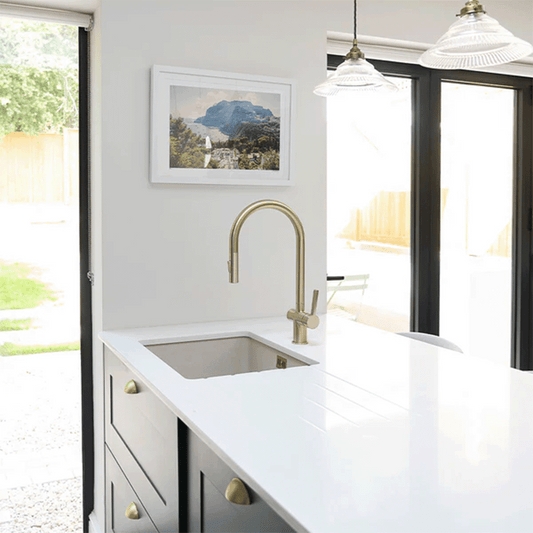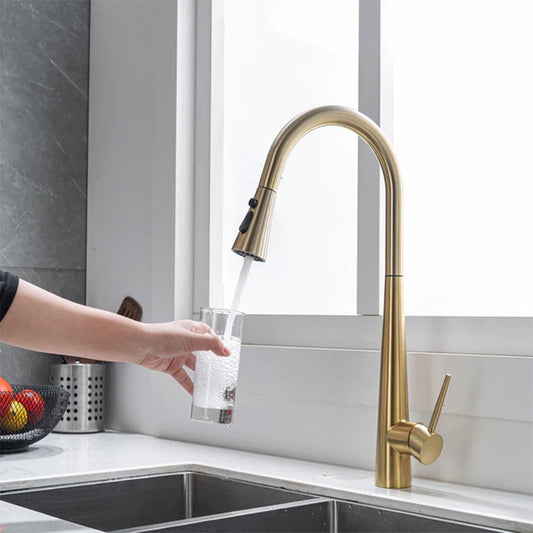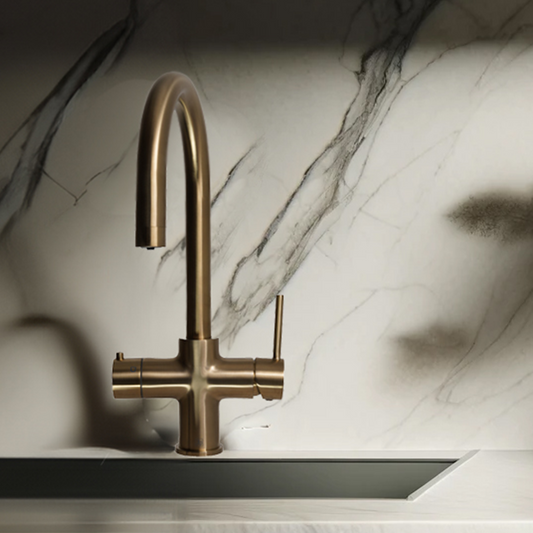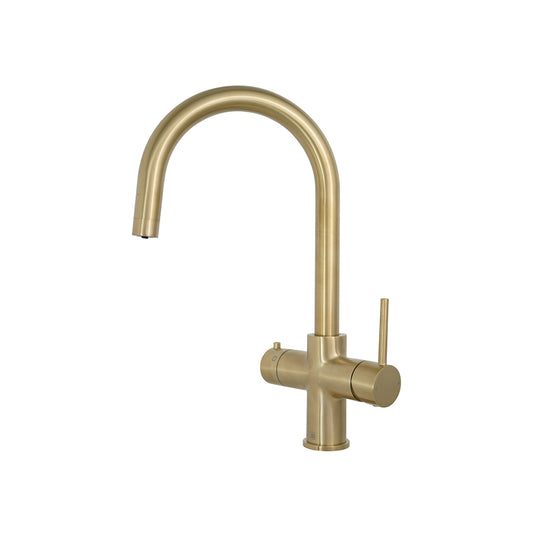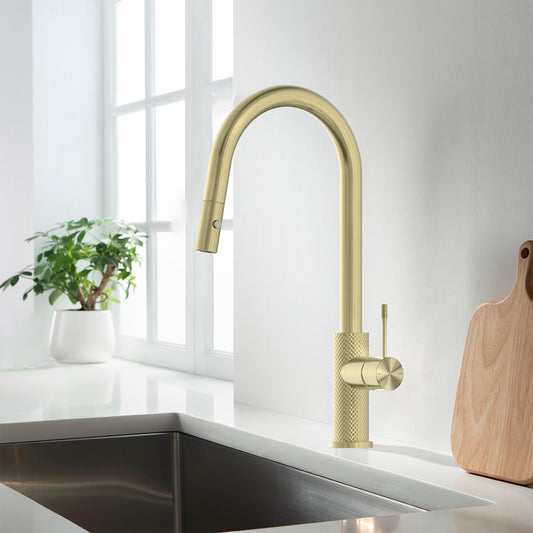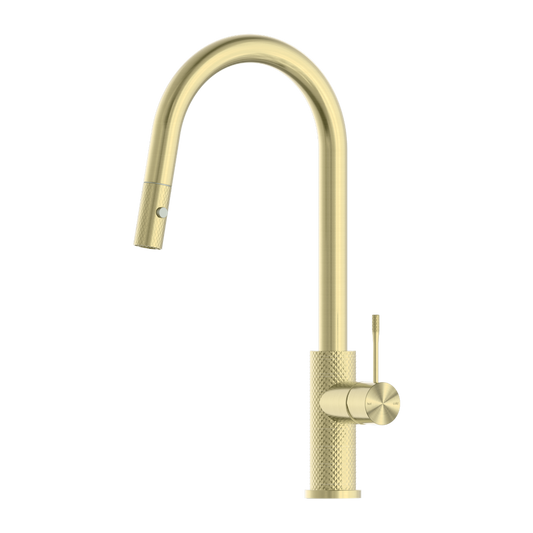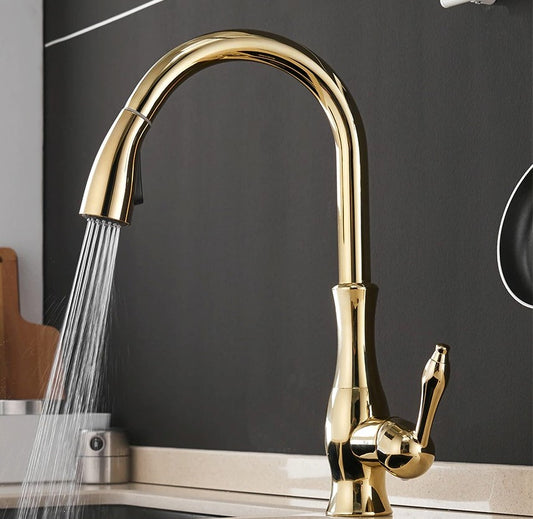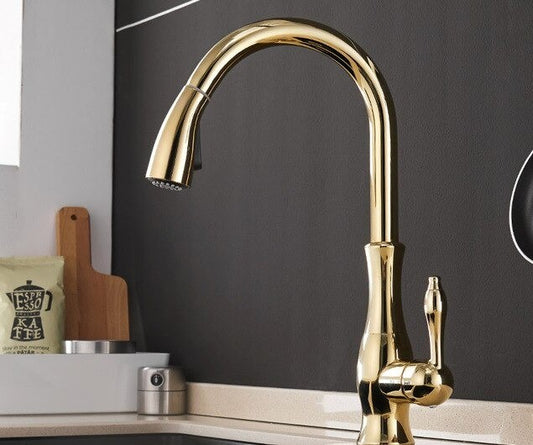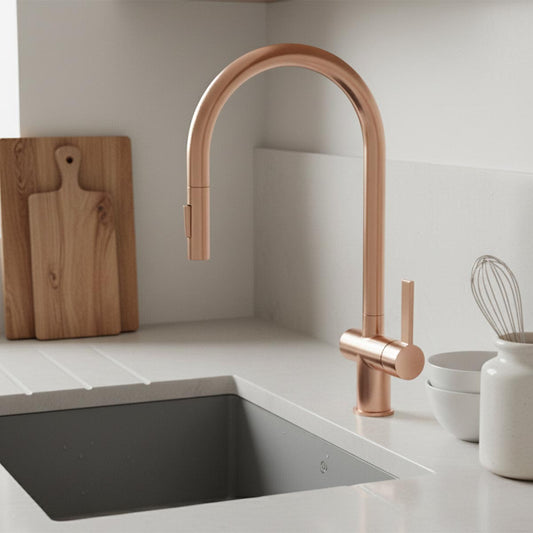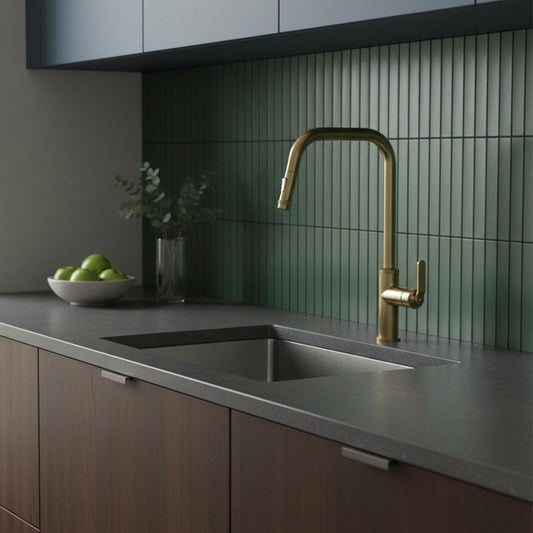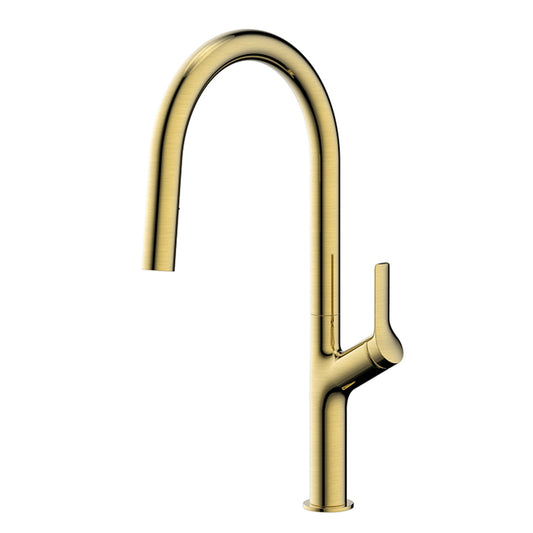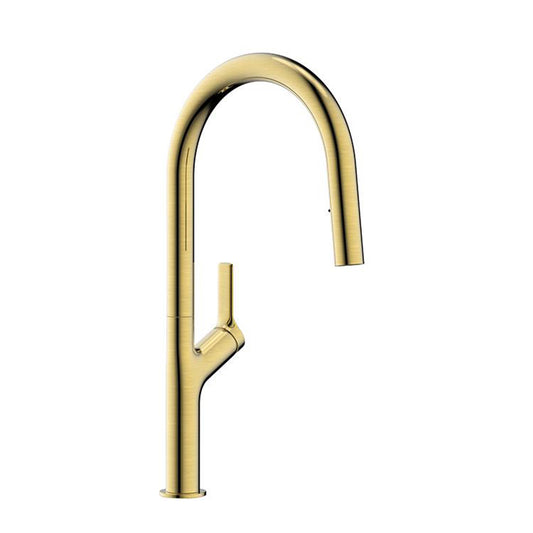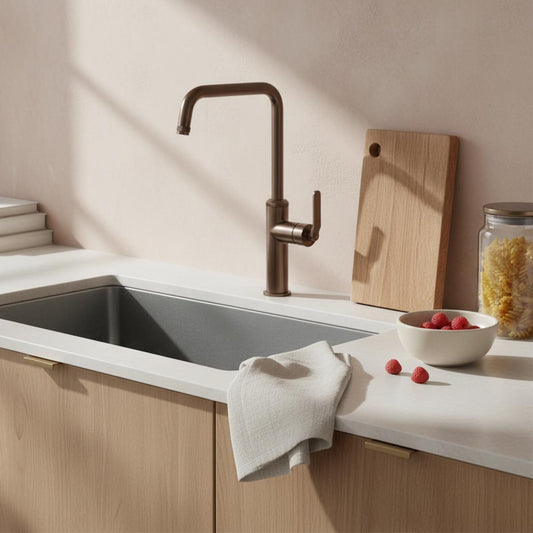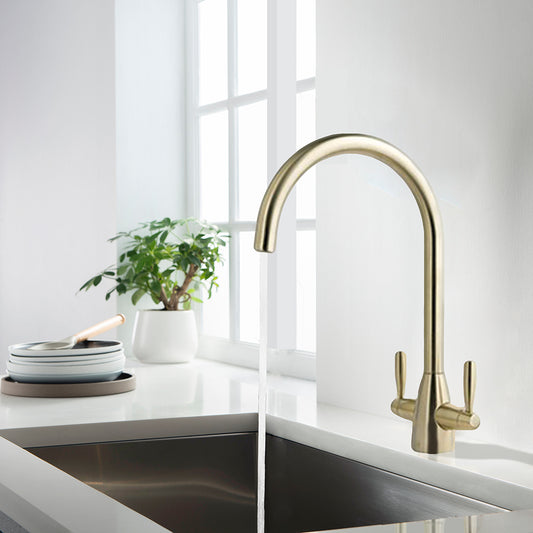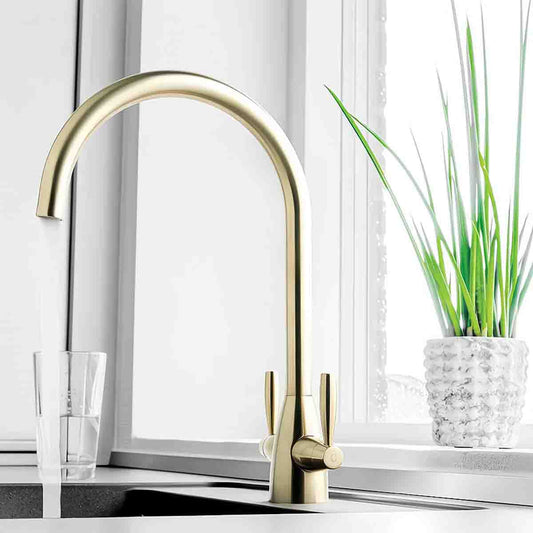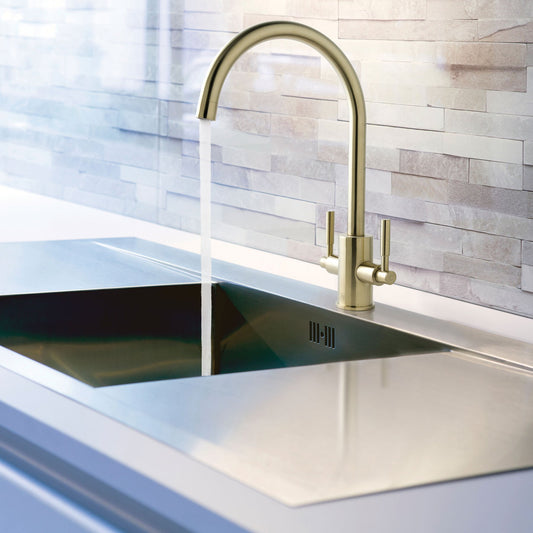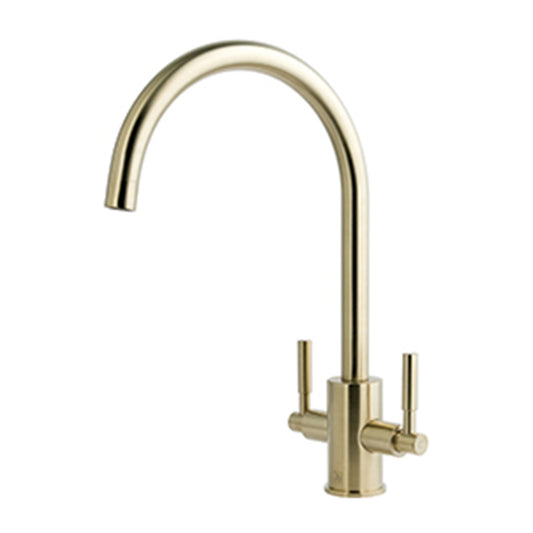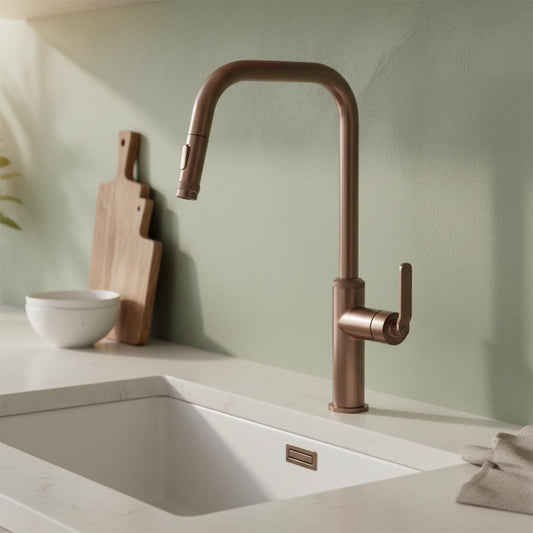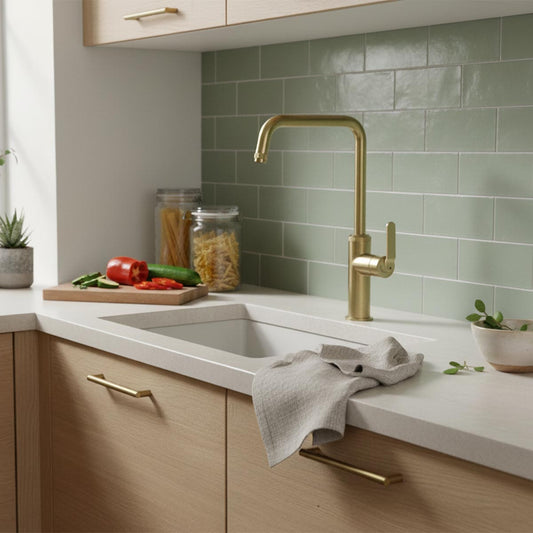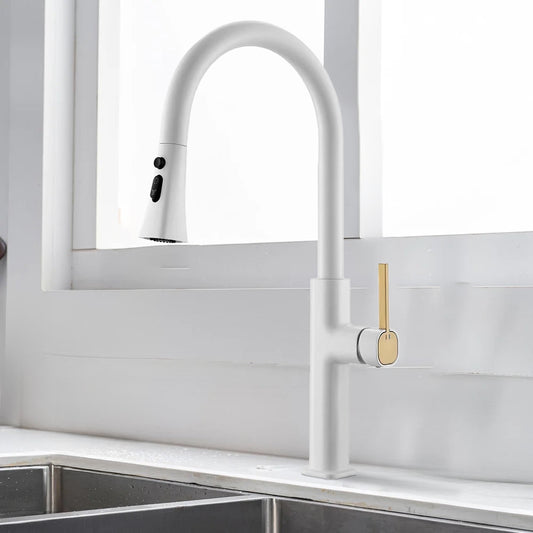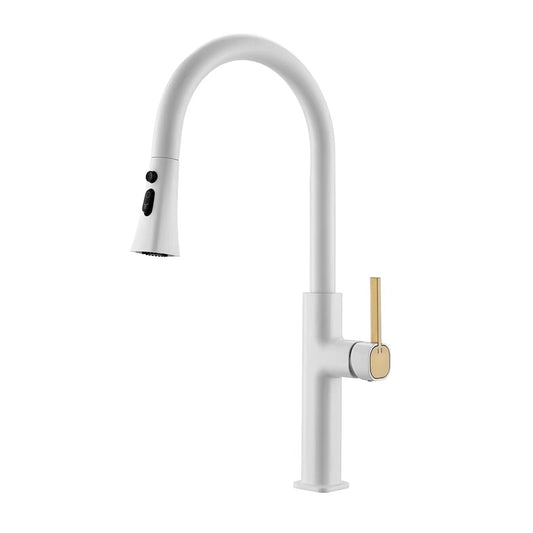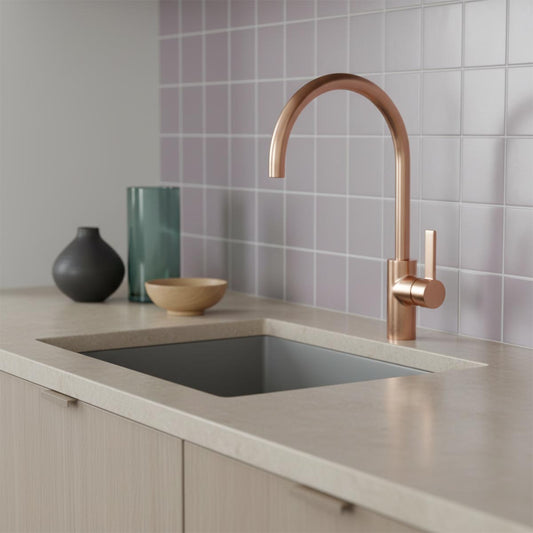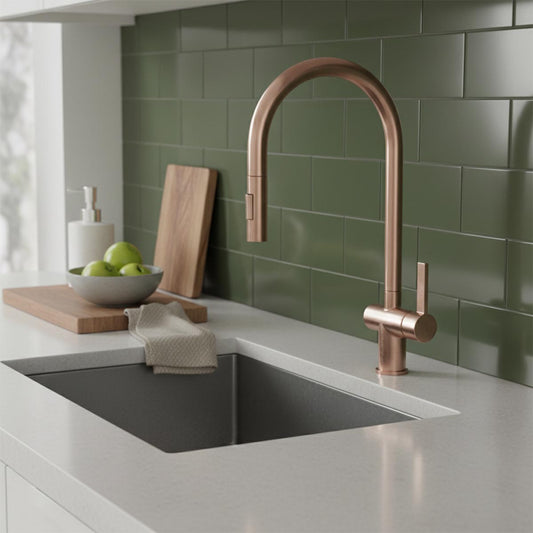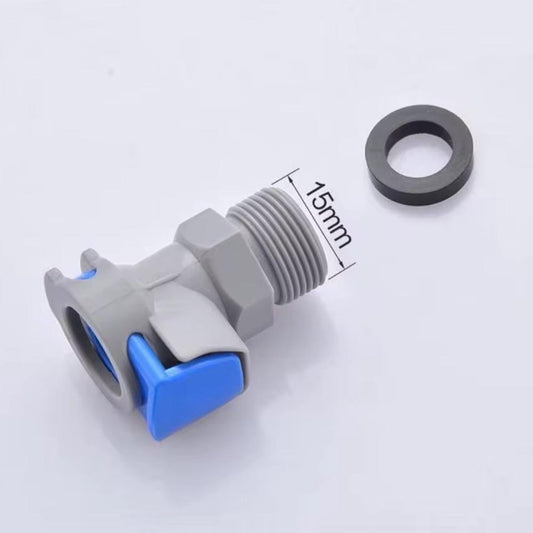Unravelling the Mystery: Why Your Gold Kitchen Tap is Leaking
Introduction to Gold Kitchen Taps
Gold kitchen taps, including the sophisticated brushed gold undermount kitchen sink and gold kitchen taps, are more than just functional fixtures; they're statement pieces that elevate the aesthetics of your kitchen. However, even the most luxurious taps like the gold kitchen sink tap and the gold undermount kitchen sink can encounter the common issue of leaking.
Common Causes of Leaks
Worn Out Washer: The washer inside a tap is a small, typically rubber part that forms a seal to prevent water from leaking out. Over time, this washer can wear out due to constant use.
This is a common issue in all types of taps, including gold kitchen sink taps. When the washer deteriorates, it loses its ability to create a tight seal, leading to drips and leaks. Regularly checking and replacing the washer is a simple yet effective way to prevent this common problem.
Corrosion:
Corrosion occurs when metal parts are exposed to water and air over a period of time, leading to chemical reactions that deteriorate the metal. In gold taps, such as the rose gold kitchen tap with pull-out features, internal parts can corrode, weakening the tap’s structure and leading to leaks. This is why even high-quality materials are not entirely immune to the effects of corrosion. Regular cleaning and keeping the tap dry can help reduce the risk of corrosion.
Improper Installation:
If a tap is not installed correctly, it can lead to various issues, including leaks. This is particularly true for complex tap designs like the rose gold kitchen tap with a pull-out mechanism.
These sophisticated models require precise installation to ensure that all parts align correctly and function smoothly. If there's any misalignment or improper fitting, it can put stress on certain parts of the tap, eventually causing leaks.
Water Pressure Issues:
Taps are designed to handle a certain range of water pressure. If the water pressure in your home is too high or fluctuates often, it can stress the internal mechanisms of the tap, including seals and joints, leading to leaks. This is especially important for more dynamic models like the gold pull-out tap, where consistent water pressure is vital for optimal performance.
Seal Deterioration:
Over time, the seals within a tap can deteriorate due to wear and tear. These seals are crucial for preventing water from leaking out of the tap’s joints and connections. Regular checks for any signs of deterioration can help in timely replacements, thereby maintaining the integrity of your gold kitchen sink taps and ensuring their longevity.
For homeowners, understanding these common causes of leaks can help in proactive maintenance and timely interventions, ensuring that their gold kitchen taps continue to function efficiently and retain their aesthetic appeal.
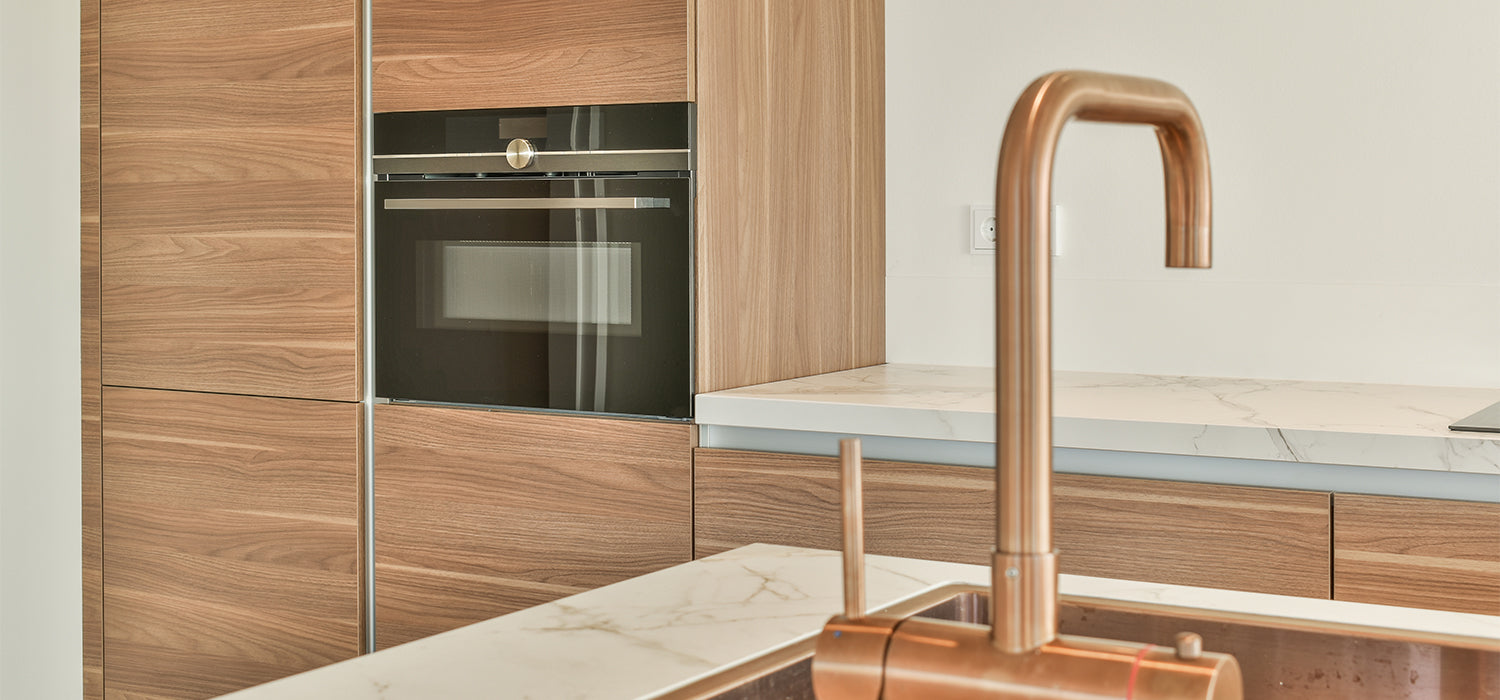
Troubleshooting Tips
Identify the Leak Source:
Begin by pinpointing the origin of the leak in your tap, Common leak points include the spout, handle, or base. Understanding where the leak is coming from can help identify the issue, whether it's a seal, washer, or a more complex internal problem.
Turn Off Water Supply:
Safety first – always turn off the water supply before attempting any repairs. This step is crucial to prevent water wastage and potential flooding while you work on fixing the leak.
Disassemble the Tap:
Proceed with caution, especially if you're dealing with a delicate tap like a champagne gold tap. Carefully take apart the components of the tap. This process might vary depending on the tap's design and complexity, especially in models like a brushed gold kitchen tap where precision is key.
Inspect and Replace Damaged Parts:
Examine the internal parts of the tap for any signs of wear or damage. Common culprits for leaks include worn-out washers or deteriorated seals. These parts are relatively easy and inexpensive to replace, yet they play a vital role in the proper functioning of your tap.
Reassemble and Test:
After replacing any damaged components, reassemble the tap, ensuring everything is tight and secure. This is particularly important in dynamic models like a gold pull out tap, where movement can exacerbate any loose fittings. Once reassembled, turn the water supply back on and test the tap to ensure the leak has been successfully fixed.
Maintenance of Gold Taps
Regular maintenance is essential for prolonging the life and preserving the aesthetic appeal of your gold taps, including those in the kitchen. Here are some key
Regular Cleaning: Use appropriate cleaning agents for gold kitchen sink taps. Gold finishes require gentle cleaning to avoid scratching or tarnishing the surface. Avoid using harsh chemicals or abrasive materials.
Check for Early Signs of Wear and Tear: Regularly inspect your tap, for any early signs of damage or wear. Catching issues early can prevent more significant problems down the line.
Periodic Checks of Internal Mechanisms: For more complex tap models, it's a good idea to periodically check the internal mechanisms. This is especially true for taps with intricate designs or additional features, as they may have more components that can wear out or malfunction
Pros and Cons
Pros:
Aesthetic Appeal: Gold kitchen taps, including those designed for gold undermount kitchen sinks, offer a luxurious and elegant look that can elevate the overall aesthetics of your kitchen. Their striking appearance makes them more than just functional items; they are statement pieces that can become the focal point of the kitchen.
Durability: High-quality gold taps, such as the Gold Kitchen Tap With Pull-Out Flexible Spray, are often made from robust materials that ensure longevity. The gold finish, when properly maintained, can resist wear and maintain its luster over time, making these taps a durable choice for your kitchen.
Unique Charm: Gold taps come in various designs, each offering a unique charm. From traditional to contemporary styles, they can complement a wide range of kitchen designs, adding a personalized touch that reflects your taste and style.
Cons:
Potential for Corrosion: Despite their durability, gold taps are not immune to corrosion. Prolonged exposure to water and air, especially in areas with hard water, can lead to corrosion over time, affecting the tap's functionality and appearance.
Cost: Gold taps, particularly designer models, can be more expensive than standard taps. The initial investment is higher, and so is the cost of maintenance, especially for taps with intricate designs or special finishes.
Need for Careful Maintenance: To preserve their appearance and functionality, gold taps require careful and regular maintenance. This includes gentle cleaning with appropriate cleaners and regular checks for any signs of wear or corrosion.

Professional Help vs. DIY
When it comes to repairing kitchen taps, the decision between professional help and DIY depends largely on the complexity of the tap and the nature of the issue. For simpler models, like a standard gold kitchen sink tap, common issues like a loose handle or a dripping spout might be manageable through DIY methods. Basic plumbing knowledge and the right tools can enable homeowners to undertake such repairs.
However, more complex models, might require the expertise of a professional. These taps often have intricate mechanisms and delicate finishes that need careful handling. Professional plumbers have the experience and tools to diagnose and fix issues without causing damage to these sophisticated taps. They can also provide valuable advice on maintenance and care to prevent future problems.
Conclusion
Understanding the common causes of leaks in gold kitchen taps and how to address them can save you time and maintain the allure of your teal and gold kitchen or stainless steel and gold kitchen. Regular maintenance and timely repairs are key to ensuring that your gold kitchen sink tap or brushed gold undermount kitchen sink remains a functional and stylish part of your kitchen.
Have you experienced a leak in your gold kitchen taps? What steps did you take to fix it, and how did it impact the overall look of your kitchen? Share your stories and tips!
other related blogs:








